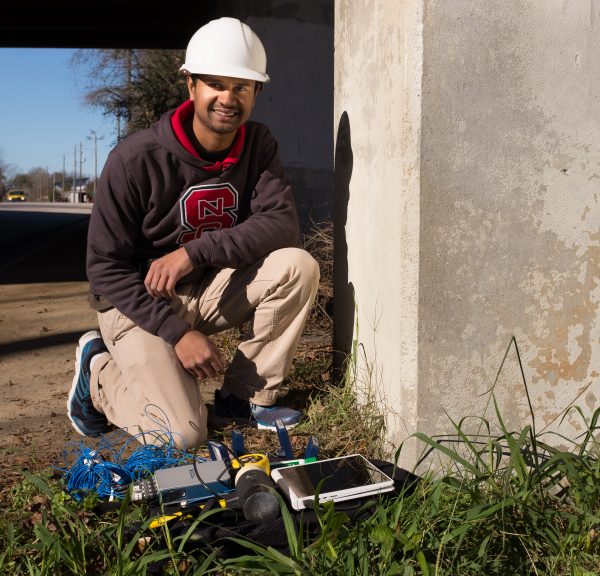Of North Carolina’s approximately 13,000 bridges, an estimated 40 percent are structurally deficient or functionally obsolete. One of the main causes is scouring, the erosion of soil around the foundation. A critical step in assessing bridge condition is to estimate the depth of the embedded pilings that support the bridge. However, there are often no accurate records of the original pile length and the current method used to assess pile length is unreliable. Dr. Murthy Guddati and PhD student Vivek Samu have developed a non-destructive testing method named Effective Dispersion Analysis of Reflections (EDAR). EDAR combines innovative use of signal processing with mathematical manipulations rooted in guided wave propagation theory, an area that Guddati has been working in for over a decade. EDAR is more reliable than the current state of practice.
With funding from the North Carolina Department of Transportation and Alaska Department of Transportation, and in collaboration with Dr. Shamim Rahman, Dr. Mervyn Kowalsky, and PhD student Ali Vaziri, Guddati and Samu have built a portable testing system based on EDAR that includes a hammer, tablet, data acquisition system and accelerometers. Laboratory and preliminary field tests confirm that the device provides reliable and accurate estimates of the embedded pile depth, signaling significant potential for routine use across the nation.



